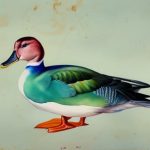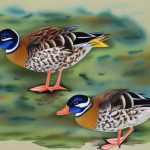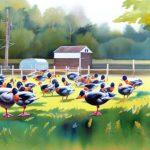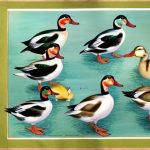Ducks are a popular choice for poultry enthusiasts and breeders due to their charming personalities, low maintenance, and ability to provide eggs and meat. There are numerous duck breeds, each with its own unique characteristics and features. When it comes to show duck breeds, there are several popular choices that are known for their beauty, distinct features, and suitability for exhibition. Show duck breeds are often bred for their appearance, size, color, and overall conformation to breed standards. In this article, we will explore the world of show duck breeds, including popular breeds, their characteristics, care and maintenance, training and handling, as well as tips for showing your duck breed.
Table of Contents
- 1 Popular Duck Breeds for Show
- 2 Characteristics and Features of Show Duck Breeds
- 3 Care and Maintenance of Show Duck Breeds
- 4 Training and Handling Show Ducks
- 5 Showing Your Duck Breed
- 6 Conclusion and Resources for Show Duck Breeders
- 7 FAQs
- 7.1 What are the different types of duck breeds?
- 7.2 What are the differences between duck breeds?
- 7.3 Which duck breed is best for egg production?
- 7.4 Which duck breed is best for meat production?
- 7.5 Are there any rare or endangered duck breeds?
- 7.6 What should I consider when choosing a duck breed to raise?
Key Takeaways
- There are many different duck breeds, each with their own unique characteristics and features.
- Popular duck breeds for show include the Pekin, Rouen, and Call ducks.
- Show duck breeds are known for their distinctive colors, markings, and body shapes.
- Care and maintenance of show duck breeds involves providing proper nutrition, housing, and healthcare.
- Training and handling show ducks can help them become more comfortable and cooperative during shows.
Popular Duck Breeds for Show
Among the most popular duck breeds for show are the Indian Runner, the Call Duck, the Rouen, the Saxony, and the Silver Appleyard. The Indian Runner duck is known for its upright stance and distinctive long, slender body. They come in a variety of colors including white, fawn, and black. The Call Duck is a small, compact breed with a round head and short bill. They are known for their friendly and sociable nature, making them a favorite among duck enthusiasts. The Rouen is a large breed with a striking resemblance to the Mallard duck. They have a deep chest, long body, and beautiful iridescent green heads. The Saxony duck is a dual-purpose breed known for its excellent egg-laying capabilities and delicious meat. They have a striking appearance with their blue plumage and white bib. The Silver Appleyard is a medium-sized breed with a unique color pattern of silver and white. They are known for their friendly disposition and excellent foraging abilities.
Characteristics and Features of Show Duck Breeds
Show duck breeds are bred for specific characteristics that make them stand out in exhibitions. These characteristics include size, shape, color, feather quality, and overall conformation to breed standards. For example, the Indian Runner duck is prized for its tall, upright stance and long, slender body. The Call Duck is valued for its small size, round head, and short bill. The Rouen is admired for its large size, deep chest, and iridescent green head. The Saxony duck is known for its striking blue plumage and white bib. The Silver Appleyard is prized for its unique silver and white color pattern. In addition to physical characteristics, show duck breeds are also judged on their temperament, behavior, and overall presentation in the show ring.
Care and Maintenance of Show Duck Breeds
Proper care and maintenance are essential for keeping show duck breeds healthy and in top condition for exhibitions. This includes providing a suitable living environment with access to clean water for swimming, a balanced diet that meets their nutritional needs, regular grooming to keep their feathers clean and well-maintained, and regular health checks to monitor for any signs of illness or disease. Show duck breeds should also be provided with adequate space to move around and exercise to maintain their physical health and well-being. Additionally, it’s important to provide protection from predators and adverse weather conditions to ensure the safety and comfort of show duck breeds.
Training and Handling Show Ducks
Training and handling show ducks is an important aspect of preparing them for exhibitions. Show ducks should be accustomed to being handled by humans from a young age to ensure they are comfortable and cooperative during grooming and presentation in the show ring. Training can include teaching show ducks to walk on a lead or follow commands to showcase their movement and conformation. Positive reinforcement techniques such as treats and praise can be used to encourage desired behaviors and build trust between the handler and the ducks. It’s also important to regularly handle show ducks to accustom them to human interaction and reduce stress during exhibitions.
Showing Your Duck Breed
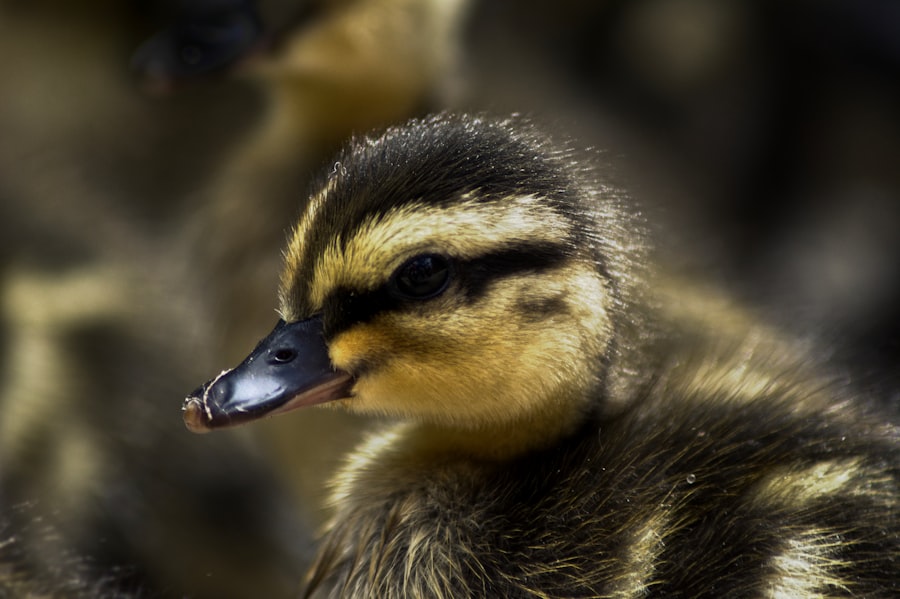
When it comes to showing your duck breed, preparation is key. This includes grooming your ducks regularly to keep their feathers clean and well-maintained, ensuring they are in top physical condition through proper diet and exercise, and practicing their presentation in the show ring. It’s important to familiarize your ducks with the show environment by exposing them to different sights, sounds, and experiences to reduce stress and anxiety during exhibitions. Additionally, it’s essential to know the breed standards and judging criteria for your specific duck breed to ensure you are presenting them in the best possible light. Finally, maintaining a positive attitude and enjoying the experience with your ducks can make the showing process more enjoyable for both you and your feathered friends.
Conclusion and Resources for Show Duck Breeders
In conclusion, show duck breeds are a fascinating and rewarding aspect of poultry breeding and exhibition. With their unique characteristics, distinct features, and suitability for exhibition, popular show duck breeds such as the Indian Runner, Call Duck, Rouen, Saxony, and Silver Appleyard are prized by enthusiasts around the world. Proper care and maintenance, training and handling techniques, as well as preparation for showing your duck breed are essential for success in the exhibition ring. For those interested in learning more about show duck breeds or getting involved in exhibitions, there are numerous resources available including breed clubs, online forums, books, and workshops that can provide valuable information and support for show duck breeders. Whether you’re a seasoned exhibitor or just starting out in the world of show ducks, the joy of showcasing these beautiful birds is an experience like no other.
If you’re interested in learning more about different duck breeds, be sure to check out Poultry Wizard’s article on “The Top 10 Duck Breeds for Your Backyard Flock.” This comprehensive guide provides valuable insights into various duck breeds, their characteristics, and suitability for different environments. Understanding the differences between breeds can help you make informed decisions when adding ducks to your flock. For more information on poultry care and breeding, visit Poultry Wizard’s website. Poultry Wizard
FAQs
What are the different types of duck breeds?
There are numerous duck breeds, including popular ones like Pekin, Mallard, Rouen, Khaki Campbell, and Muscovy. Each breed has its own unique characteristics and traits.
What are the differences between duck breeds?
Duck breeds differ in terms of size, color, plumage, egg production, and temperament. Some breeds are better suited for meat production, while others are known for their prolific egg-laying abilities.
Which duck breed is best for egg production?
The Khaki Campbell duck is known for its exceptional egg-laying abilities, often producing over 300 eggs per year. They are a popular choice for those interested in raising ducks for eggs.
Which duck breed is best for meat production?
The Pekin duck is a popular choice for meat production due to its fast growth rate and tender, flavorful meat. They are commonly raised for their meat in commercial duck farming operations.
Are there any rare or endangered duck breeds?
Yes, there are several rare and endangered duck breeds, including the Silver Appleyard, Saxony, and Aylesbury. Conservation efforts are being made to preserve these breeds and prevent them from becoming extinct.
What should I consider when choosing a duck breed to raise?
When choosing a duck breed to raise, consider factors such as your purpose for raising ducks (meat, eggs, pets), available space, climate, and your level of experience with duck care. Each breed has its own specific needs and characteristics to consider.
Meet Walter, the feathered-friend fanatic of Florida! Nestled in the sunshine state, Walter struts through life with his feathered companions, clucking his way to happiness. With a coop that’s fancier than a five-star hotel, he’s the Don Juan of the chicken world. When he’s not teaching his hens to do the cha-cha, you’ll find him in a heated debate with his prized rooster, Sir Clucks-a-Lot. Walter’s poultry passion is no yolk; he’s the sunny-side-up guy you never knew you needed in your flock of friends!


